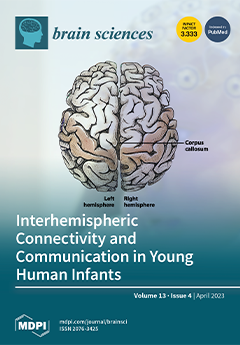Background: Cognitive and functional decline are common problems in older adults, especially in those 75+ years old. Currently, there is no specific plasma biomarker able to predict this decline in healthy old-age people. Machine learning (ML) is a subarea of artificial intelligence (AI),
[...] Read more.
Background: Cognitive and functional decline are common problems in older adults, especially in those 75+ years old. Currently, there is no specific plasma biomarker able to predict this decline in healthy old-age people. Machine learning (ML) is a subarea of artificial intelligence (AI), which can be used to predict outcomes Aim: This study aimed to evaluate routine laboratory variables able to predict cognitive and functional impairment, using ML algorithms, in a cohort aged 75+ years, in a one-year follow-up study. Method: One hundred and thirty-two older adults aged 75+ years were selected through a community-health public program or from long-term-care institutions. Their functional and cognitive performances were evaluated at baseline and one year later using a functional activities questionnaire, Mini-Mental State Examination, and the Brief Cognitive Screening Battery. Routine laboratory tests were performed at baseline. ML algorithms—random forest, support vector machine (SVM), and XGBoost—were applied in order to describe the best model able to predict cognitive and functional decline using routine tests as features. Results: The random forest model showed better accuracy than other algorithms and included triglycerides, glucose, hematocrit, red cell distribution width (RDW), albumin, hemoglobin, globulin, high-density lipoprotein cholesterol (HDL-c), thyroid-stimulating hormone (TSH), creatinine, lymphocyte, erythrocyte, platelet/leucocyte (PLR), and neutrophil/leucocyte (NLR) ratios, and alanine transaminase (ALT), leukocyte, low-density lipoprotein cholesterol (LDL-c), cortisol, gamma-glutamyl transferase (GGT), and eosinophil as features to predict cognitive decline (accuracy = 0.79). For functional decline, the most important features were platelet, PLR and NLR, hemoglobin, globulin, cortisol, RDW, glucose, basophil, B12 vitamin, creatinine, GGT, ALT, aspartate transferase (AST), eosinophil, hematocrit, erythrocyte, triglycerides, HDL-c, and monocyte (accuracy = 0.92). Conclusions: Routine laboratory variables could be applied to predict cognitive and functional decline in oldest-old populations using ML algorithms.
Full article






